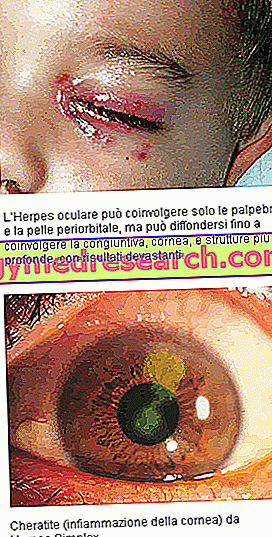Pregnancy and Mortadella
Mortadella in pregnancy: introduction
Pregnancy is a very delicate special physiological condition, in which the diet can exert a positive or negative influence on the unborn child; in this article we will focus on the relevance or otherwise of mortadella in pregnancy.

Many think that mortadella, as a sausage, must be totally excluded in the diet of the expectant mother; this is because, among the various dangers in pregnancy, there are also the dreadful food diseases (infections, intoxications, toxinfections and foodborne parasitosis) and the risks associated with the intake of food additives.
Cold cuts, cold cuts and sausages (raw preserved meats) are risky for:
- The presence of pathogens in raw materials
- The possible absence of cooking, which does not guarantee the healthiness of the finished food
- The presence of problematic additives.
It must however be remembered that mortadella, being cooked, may not have the same risk index as compared to raw preserved meat. Let's go into more detail.
Dangers
Dangers of foodborne diseases in pregnancy
The most dangerous food diseases in pregnancy are those that can compromise, even irreversibly, the state of health of the unborn child. In reality any pathology, depending on the severity, can interfere with the success of the gestation. However, most of these act indirectly, significantly weakening the mother's state of health or preventing the correct feeding of the mother necessary for fetal development. Fortunately, only a few food diseases are able to directly affect the health of the unborn child; this does not mean that this possibility should be taken lightly.
The pregnant woman must pay particular attention not to contract two diseases, toxoplasmosis and listeriosis:
- Toxoplasmosis is a parasitic disease caused by Toxoplasma gondii . If the infection occurs during pregnancy, in 30% of cases it crosses the placenta and reaches the child; as the gestational age increases, the chances of infection of the fetus also increase. There is therefore a high probability that the unborn child manifests the so-called congenital toxoplasmosis; this can cause fetal malformations (especially neurological), premature birth, abortion and death of the child
- Listeriosis is a bacterial infection caused mainly by Listeria monocytogenes and marginally by L. ivanovii and L. grayi . Listeria, which reaches the intestine orally and then spreads into the bloodstream, can proliferate (initially without symptoms) in the vagina and uterus. The symptoms become evident only in the third month of a possible pregnancy and last 7-10 days. Among the most feared consequences of listeriosis are: spontaneous abortion, premature birth and potentially lethal infection of the newborn. 30% of cases of listeriosis affect pregnant women and 22% of severe contracted forms cause fetal loss or neonatal death; mothers tend to survive.
Insights on Toxoplasmosis
In healthy adults (including non-pregnant women), toxoplasmosis infection usually does not cause obvious symptoms. Occasionally there is a slight flu symptom that includes muscle pain and swollen lymph nodes. In a limited number of people eye problems can develop. Toxoplasma infection, even in healthy people, does not heal in the strict sense of the word. The parasite isolates itself inside the muscles and remains under control for the whole life thanks to the action of the immune system. In immunosuppressed severe symptoms such as convulsions and coordination difficulties may occur. Contamination from toxoplasmosis generally takes place by consuming raw or undercooked food that contains parasite cysts, exposing itself to infected cat feces and, as we have said, from mother to child during pregnancy. This disease can rarely be spread by blood transfusion. It is not otherwise spreadable among people. The parasite only reproduces sexually among cats but can infect most warm-blooded animals, including of course humans. Diagnosis is easy; a blood test is performed for specific antibodies or by testing the amniotic fluid (amniocentesis) for finding the DNA of the parasite.
The prevention of toxoplasmosis consists simply in respecting the basic hygienic rules and in totally cooking food. Pregnant women are advised to avoid cleaning the cat litter and gardening operations, especially with bare hands and before meals. For normal people not affected by pregnancy, usually no treatment is needed. During pregnancy, on the other hand, to minimize the risks associated with the disease, it is used to administer spiramycin or pyrimethamine / sulfadiazine and folinic acid.
Half of the world's population has been infected with toxoplasmosis but has not developed any symptoms.
Insights on Listeriosis
Listeria is an ubiquitous (omnipresent) pathogen that is transmitted mainly orally due to the ingestion of contaminated food products. In healthy people it is responsible for eating disorders such as gastroenteritis; in people with a compromised immune system, pregnant women, newborns and the elderly, on the other hand, can penetrate the body by passing through the intestine and causing bacteremia, systemic infections or those affecting the central nervous system (meningitis, meningoencephalitis, brain abscess, cerebritis, etc.). ).
Listeriosis is manifested by diarrhea and other gastrointestinal symptoms, fever, muscle pain, stiff neck, confusion, convulsion and, as we have seen, complications of pregnancy. The symptoms related to septicemia can occur up to two months after ingestion.
The prevention of listeriosis for pregnant women is essentially of a hygienic food type; it is advisable to avoid unpasteurized pâtés, raw minced sausages and high-risk foods such as soft or blue cheese, such as feta, brie, camembert, bleu. The diagnosis of listeriosis requires the detection of the bacterium in the blood and / or in the cerebrospinal fluid. Treatment includes prolonged administration of antibiotics, mainly ampicillin and gentamicin, to which the body is usually sensitive.
Mortadella additives: do they hurt during pregnancy?
For many years mortadella was produced with the addition of various types of additives. These include: colorants, artificial flavors, flavor enhancers, powdered milk, phosphates, antioxidants and other types of preservatives. However, recently there has been a trend reversal, caused mainly by alarmism on the hypothetical non-health of these ingredients. The focus was mainly on additives: E450 (diphosphates), E451 (triphosphates) and E452 (polyphosphates).
In reality, as scientific research shows, within the limits imposed by the law these supplementary ingredients are totally harmless. At high doses they appear to be responsible for a decrease in intestinal calcium absorption, metabolic and digestive impairment and hyperactivity.
On the other hand, to meet the needs of the most scrupulous mothers, today the food industry has modernized the mortadella recipe depriving it of most of the additives, including the much feared phosphates.
Conclusions
Is mortadella given during pregnancy?
Yes. Commercial mortadella, fresh, well preserved and just opened is considered safe. It is different for household products, but very rare in the case of mortadella. It is also advisable to avoid foods that have been open for a long time, exposed to the air and previously come into contact with work surfaces or handled.
For the deep and total cooking system that characterizes mortadella, as in the case of cooked ham, cooked shoulder, roast turkey and frankfurter, this ground sausage is also allowed in the diet of pregnant women. The heat treatment is sufficiently intense and prolonged to destroy any parasites, such as Toxoplasma gondii (also in the form of cysts), and the most dangerous bacteria such as Listeria monocytogenes . Fortunately this last microorganism is of the Gram positive type (it is not provided with thermostable endotoxins), asporogenous (it does not produce thermostable spores) and it multiplies effectively only around 30 ° C, while it dies completely at pasteurization temperature (75- 85 ° C); this means that, unlike other bacteria, it is dangerous only when it is alive.
Even as regards the presence of food additives, mortadella is considered safe. Today most of the recipes totally exclude the presence of phosphates but, even if this were not the case, we recall that the concentrations allowed by the parameters of the law do not have any kind of contraindication for the health of consumers, even in pregnancy.



